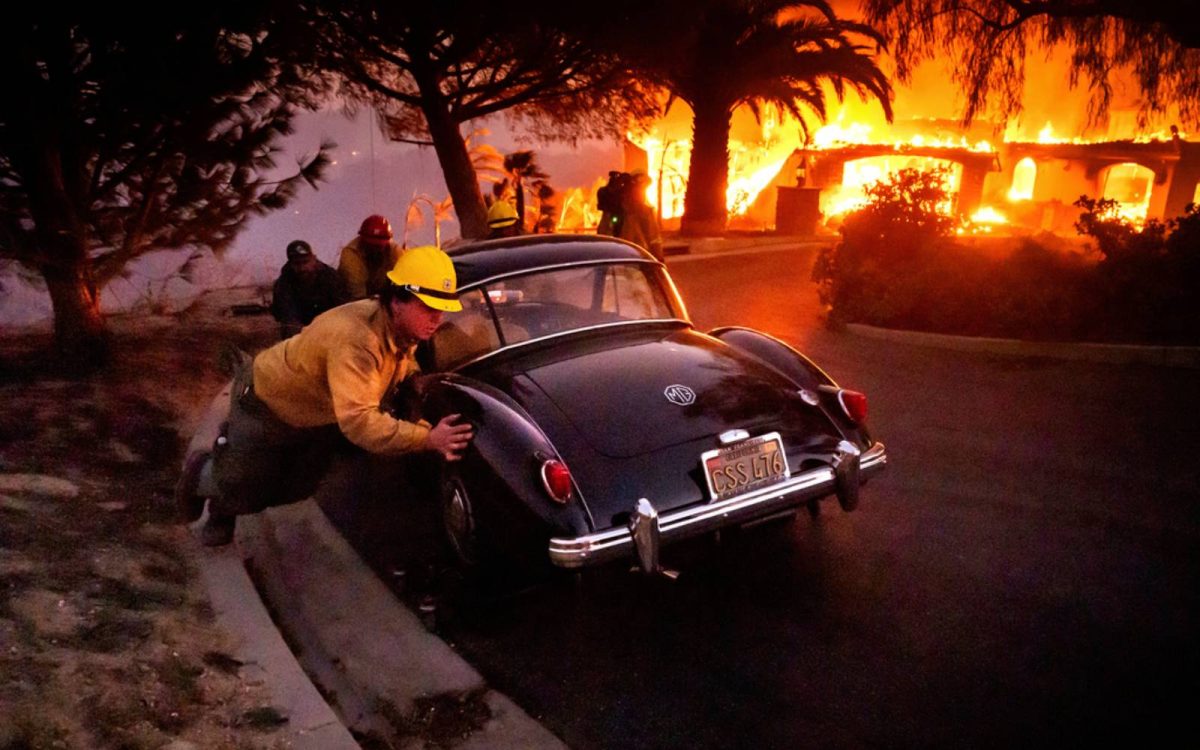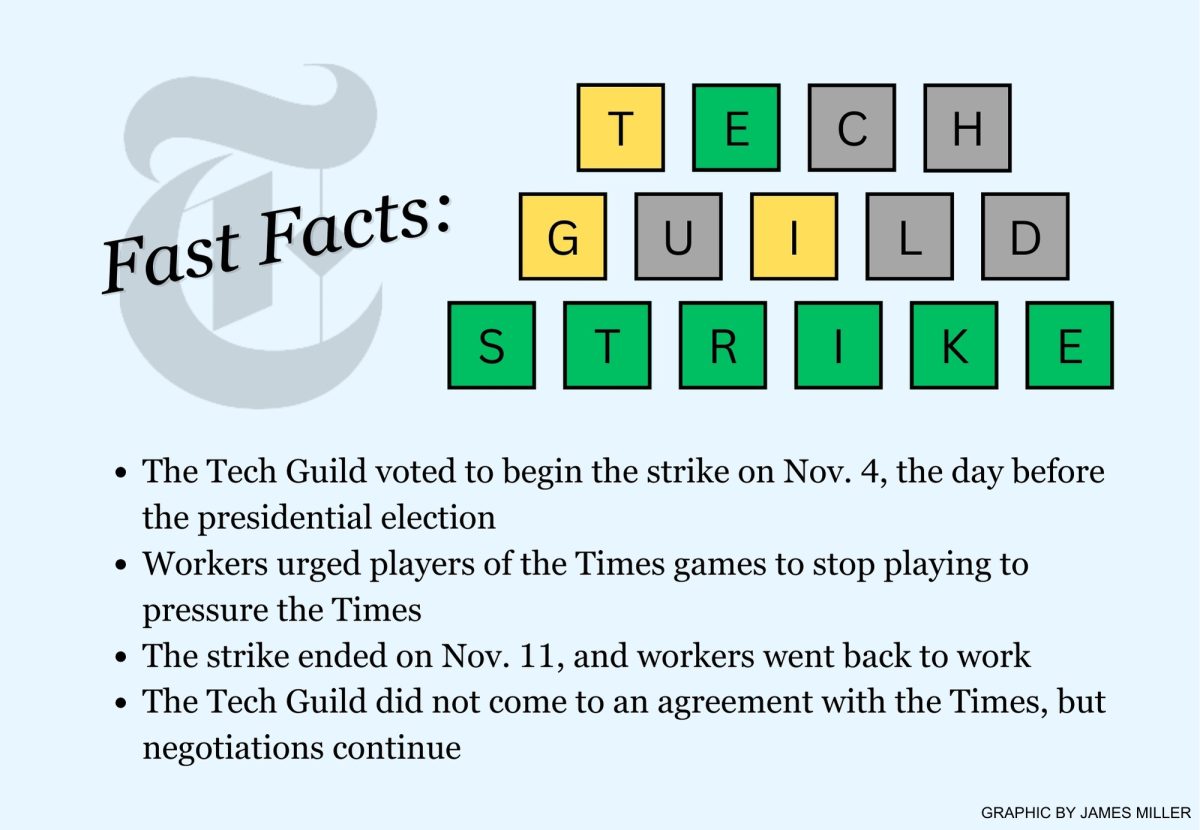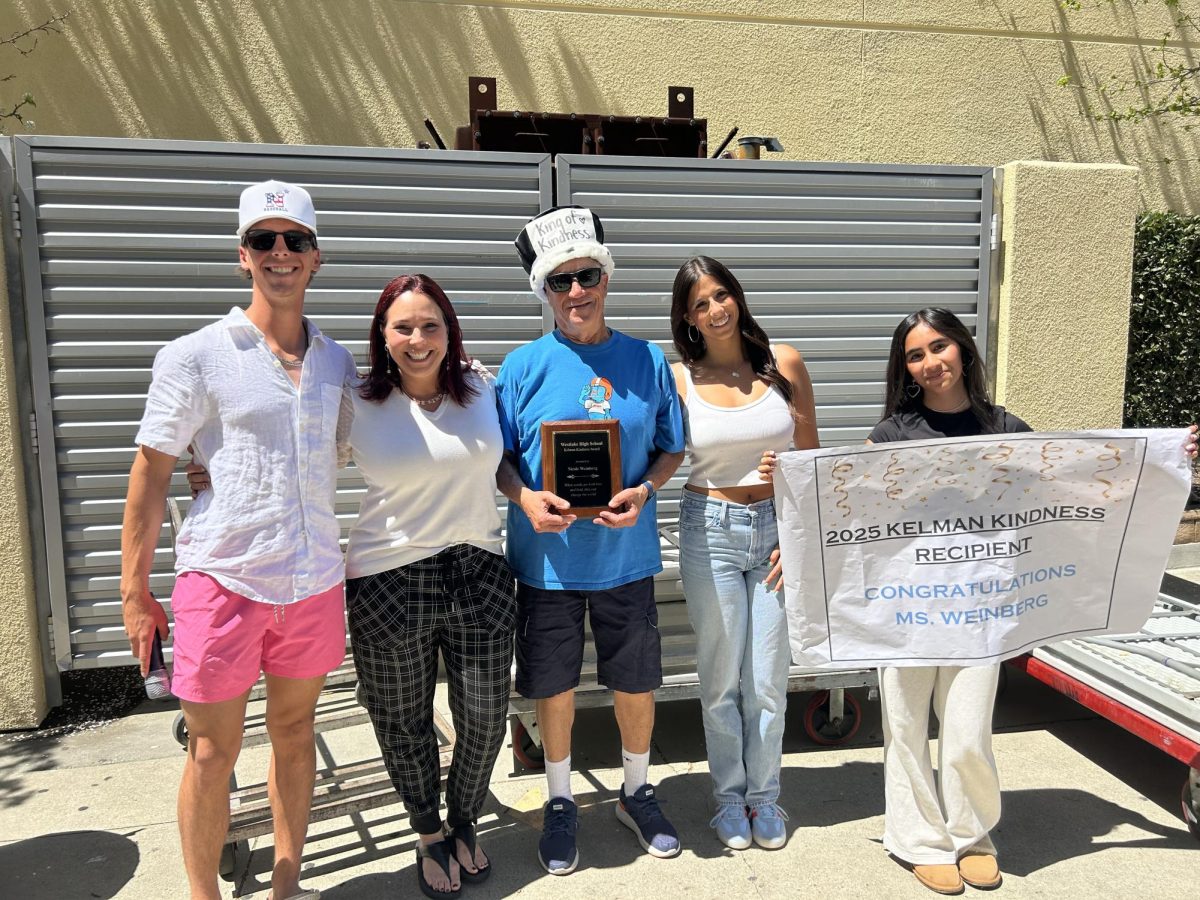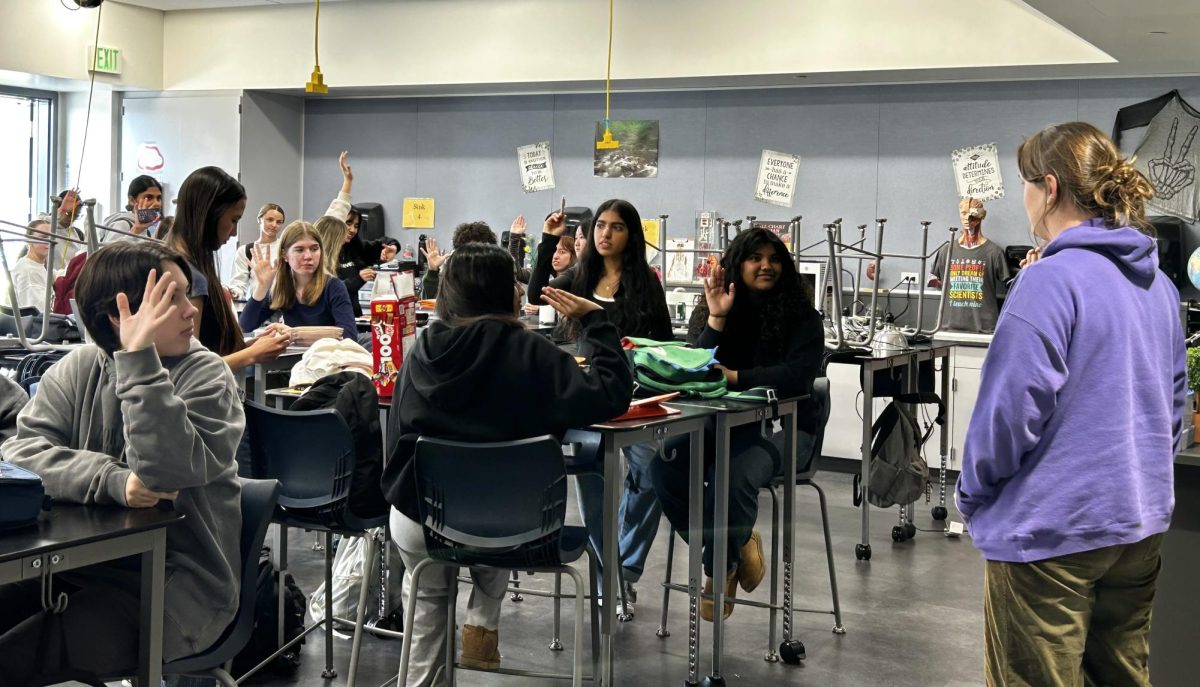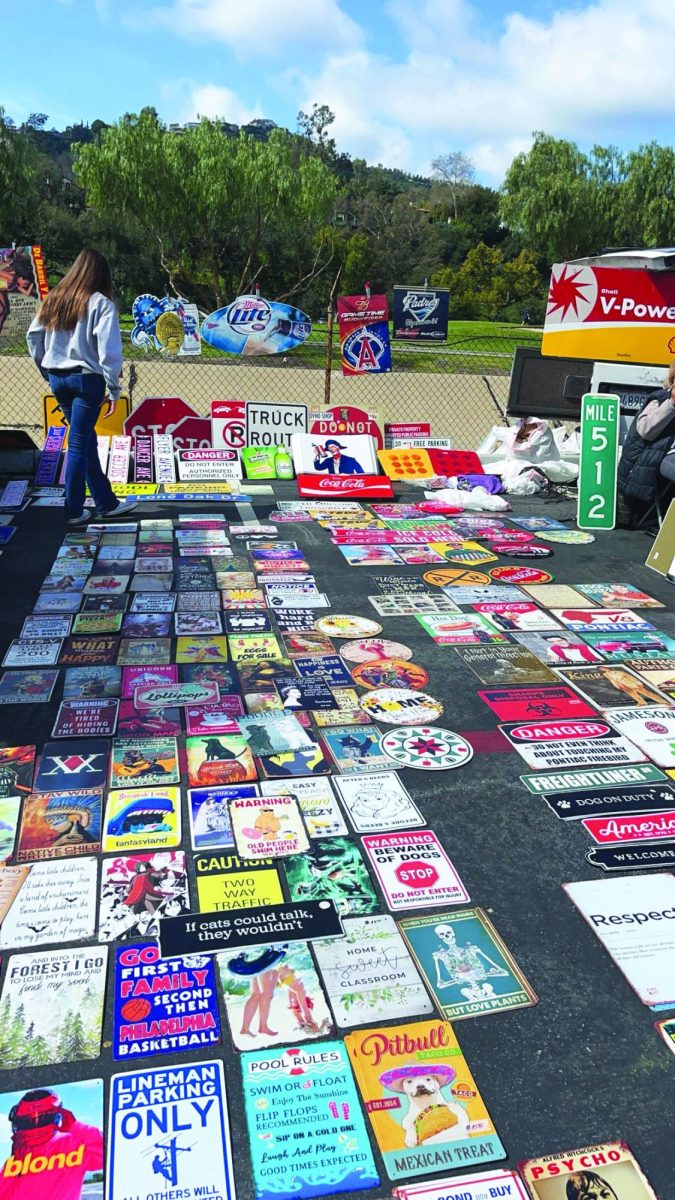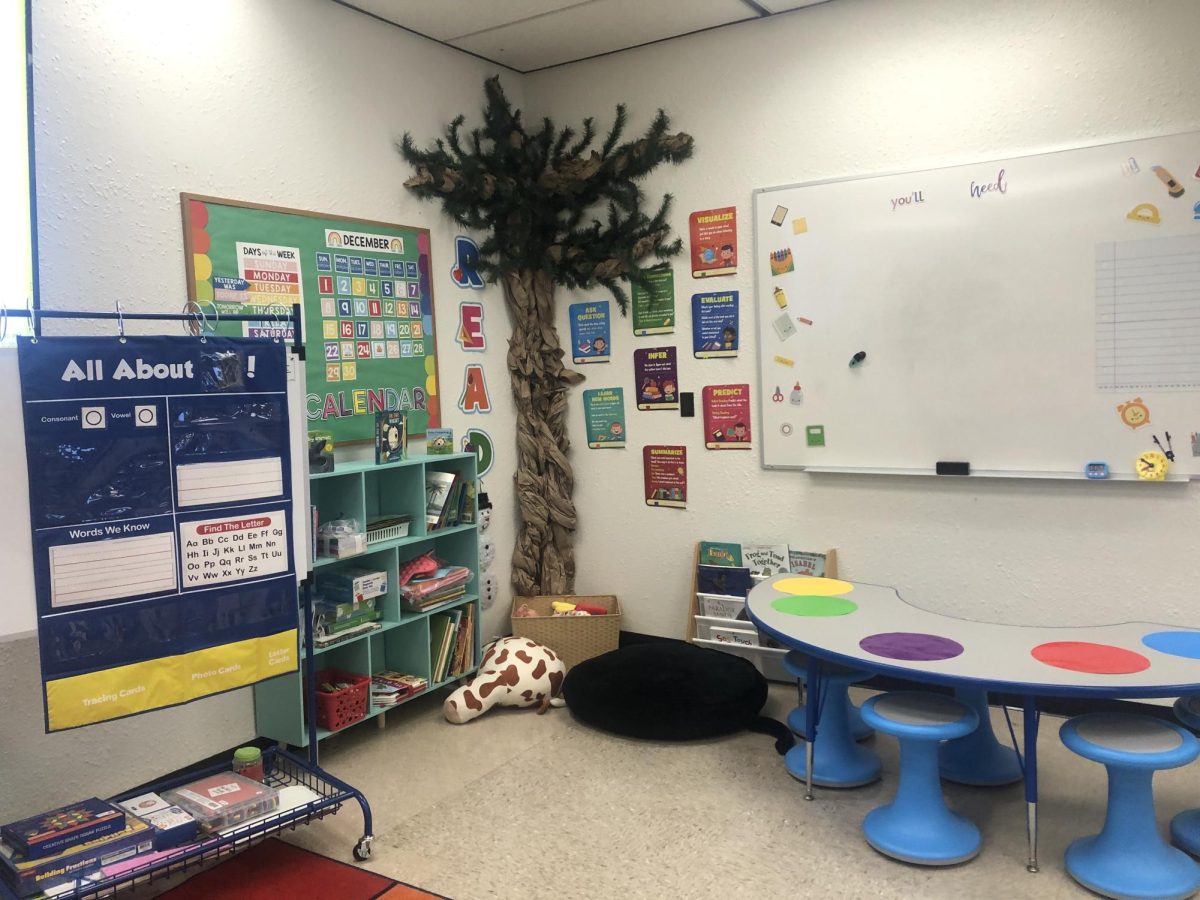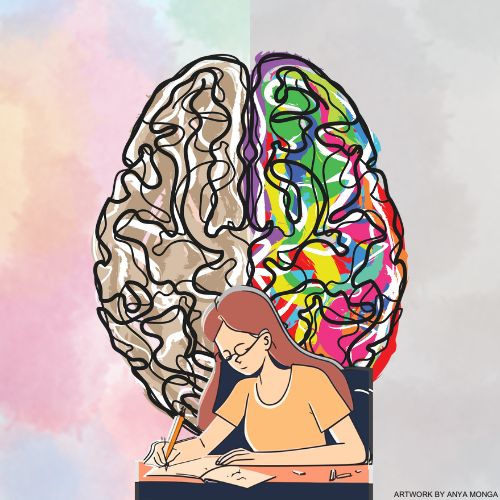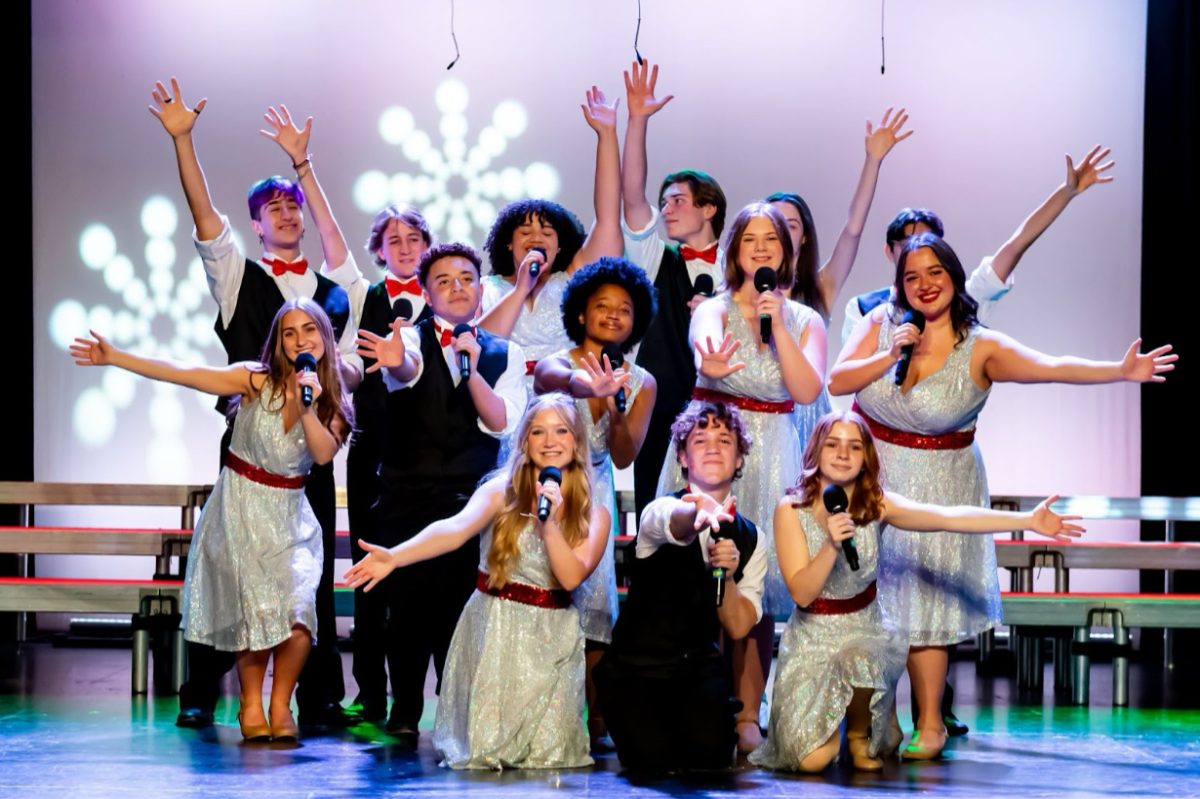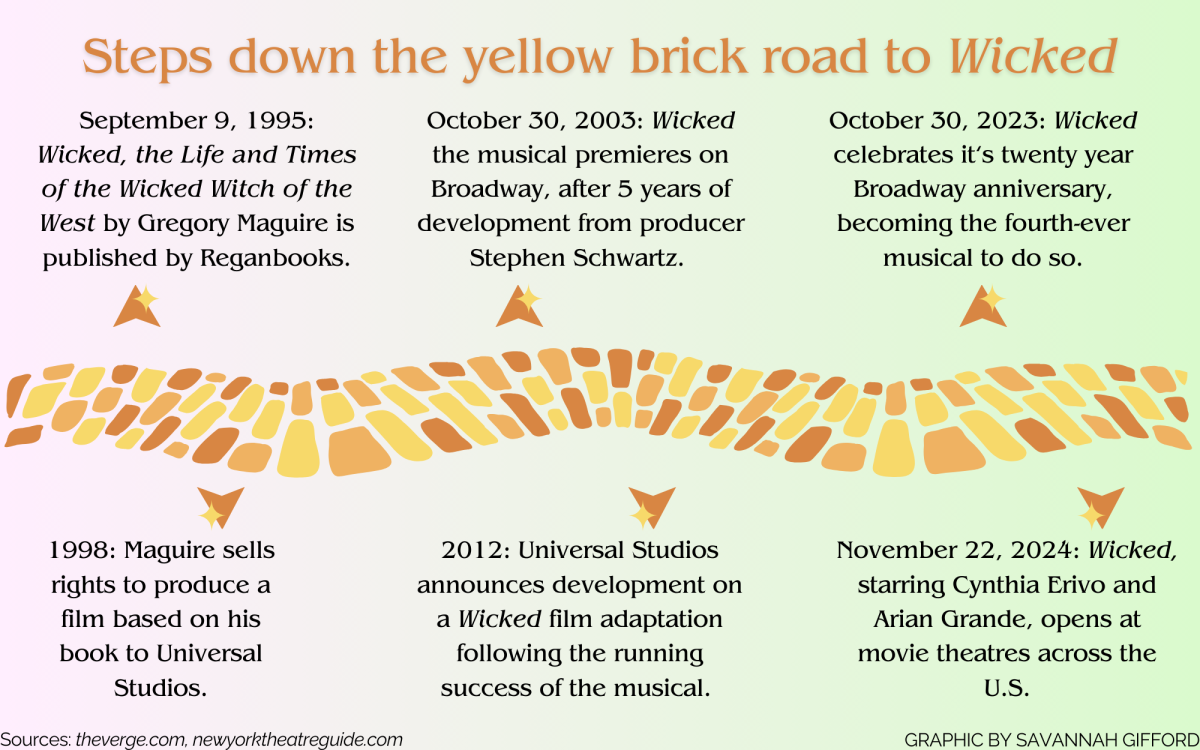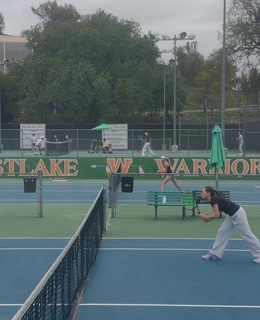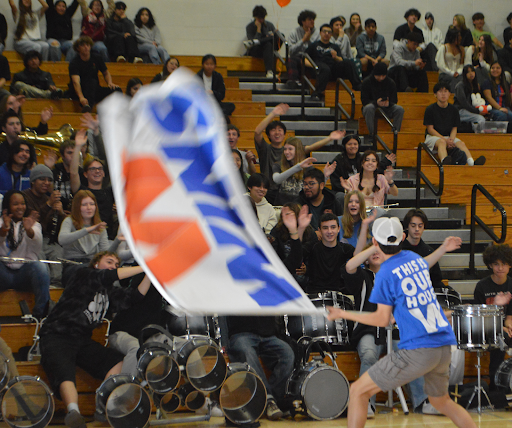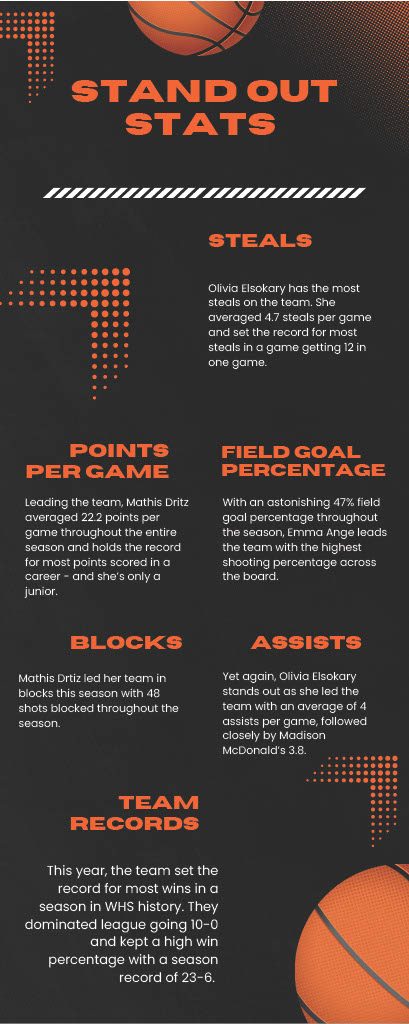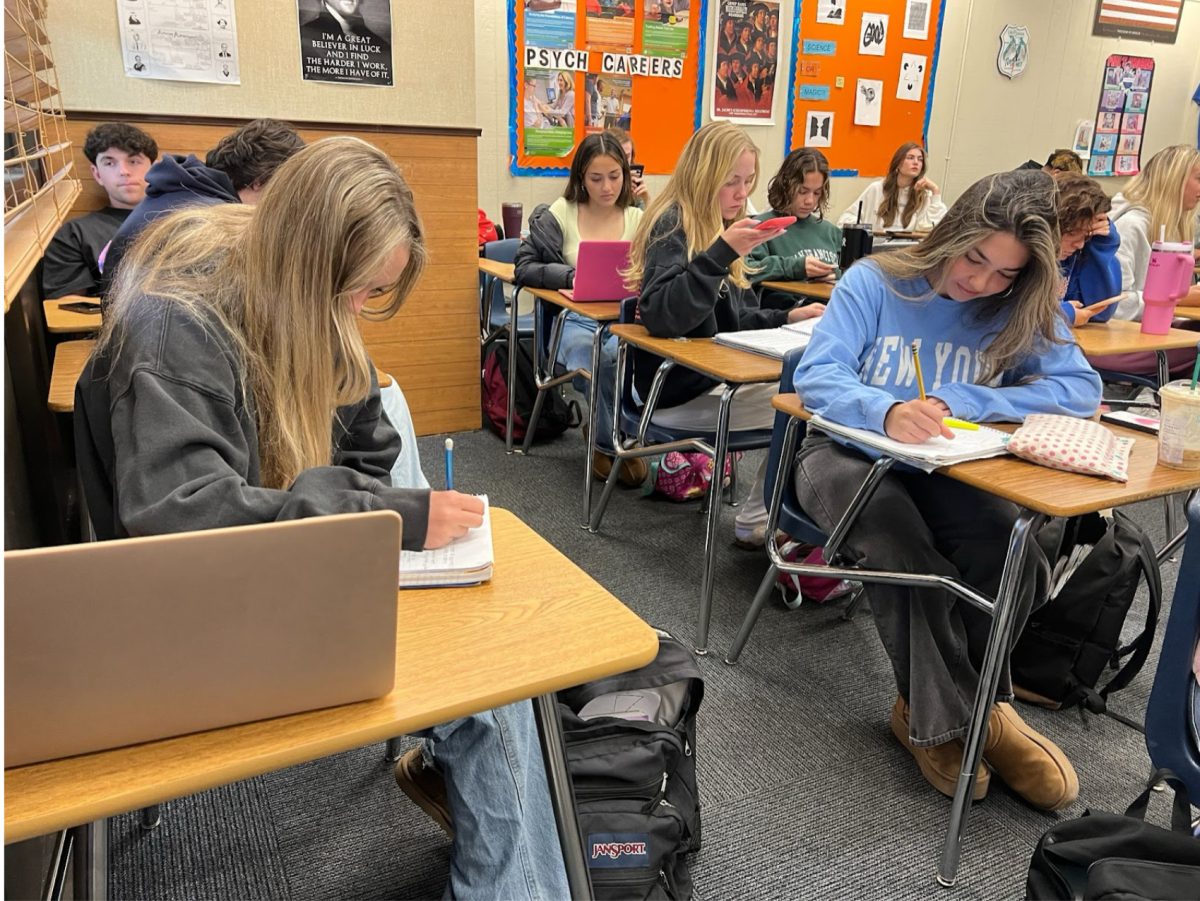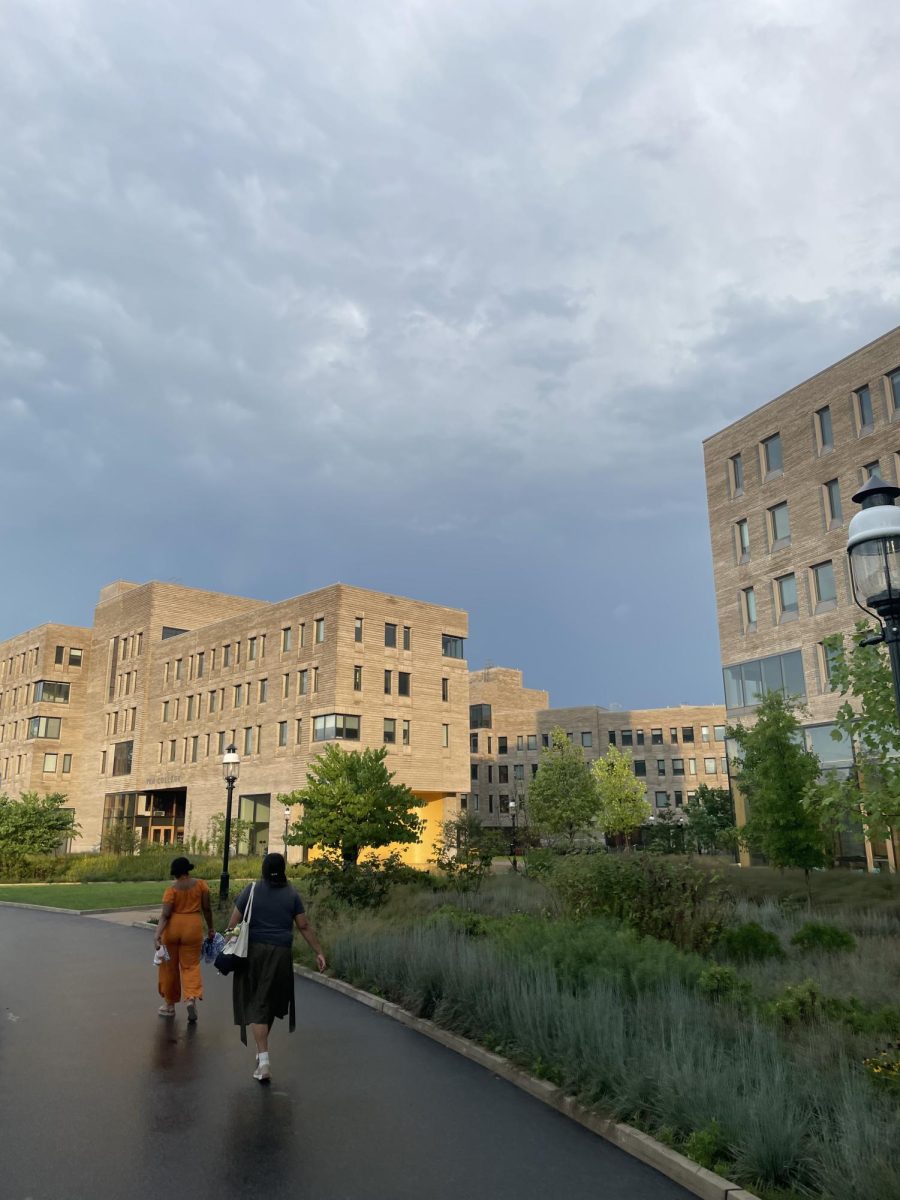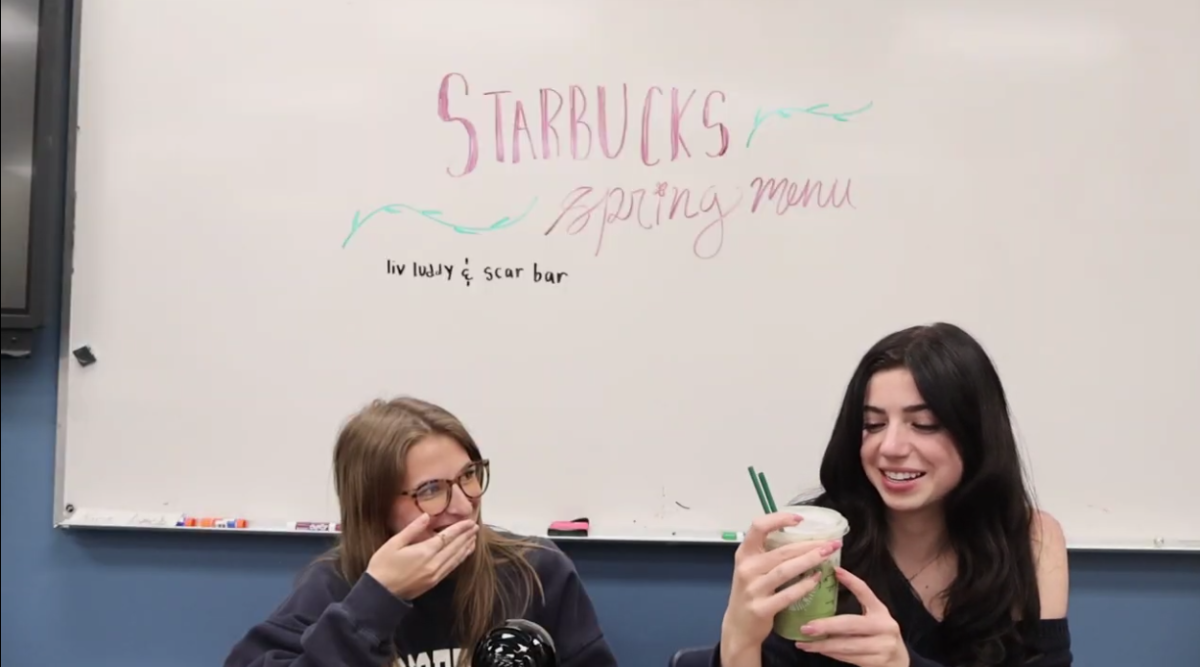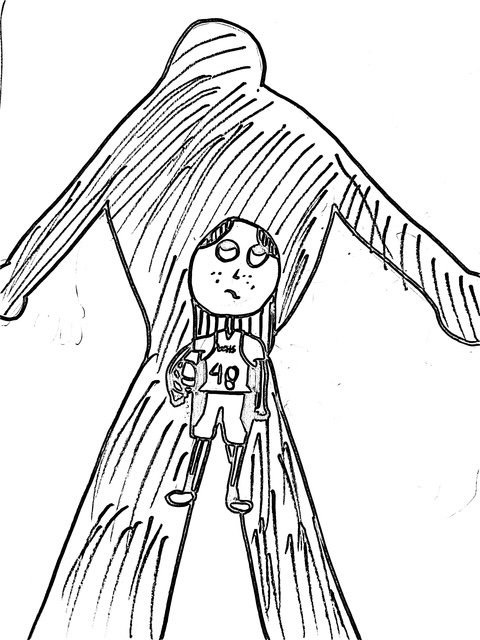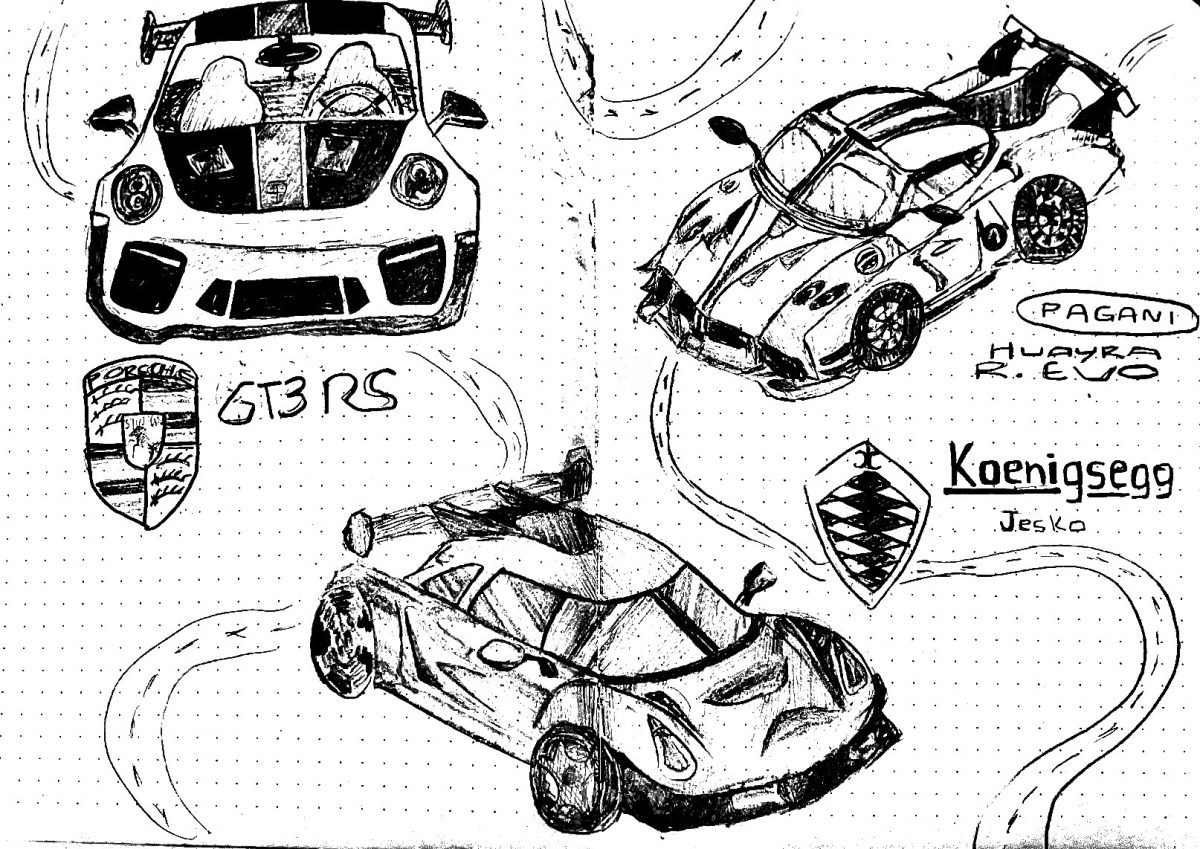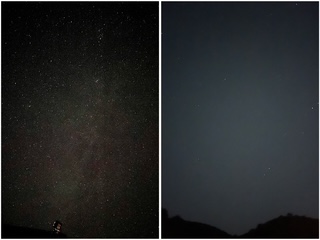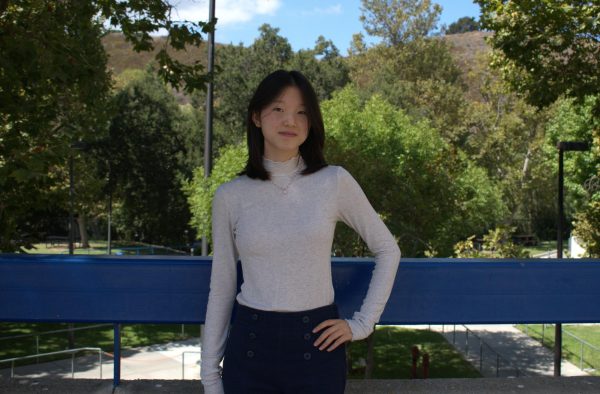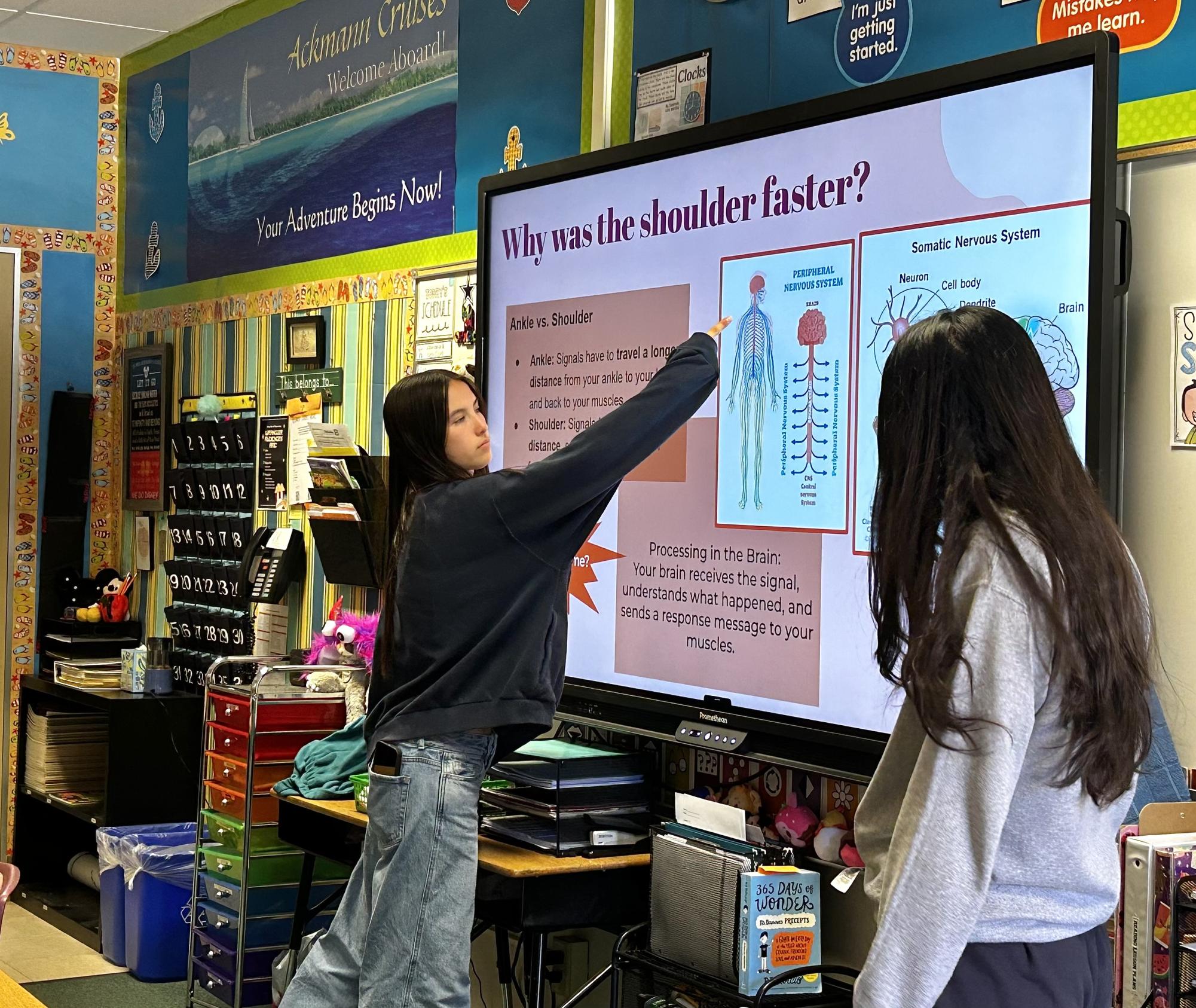
On March 9, dozens of WHS students gathered in a crowded classroom, clamoring at first but coming to quiet as club president Linsey Niebolt ‘25 called the room to order at the start of lunch as she does every other Monday. “Girls in STEM: the best place to be right now,” she announced. This is the scene at Girls in STEM’s March meeting.
GIS is a WHS club that meets every other Monday in 61C. Its main project is its afterschool volunteering at Lang Ranch Elementary where high school volunteers lead STEM–related activities and crafts for the children on one Wednesday per month. Each month relates to a specific field in STEM, with activities that provide a deeper understanding of the concepts and systems in that field. Activities include making ice cream, testing and recording reaction times and physics demonstrations.
“Everyone is super open and ready to learn at the elementary schools,” said Plara Paik ‘25, GIS treasurer and club member of four years. “It’s really fun because you get to see the kids learn and grow as people.”
GIS is intended to give elementary schoolers exposure to science, technology, engineering and mathematics through monthly, afterschool activities. At these meetings, GIS volunteers create and plan science experiments, crafts and other activities that illustrate STEM concepts and phenomena at an elementary–school level.
“We don’t compete; it’s not Science Olympiad,” said Niebolt. “We’re just trying to help other people learn new things.”
In particular, GIS emphasizes encouraging the young girls at elementary schools to pursue their interests in sciences to redress the historic lack of gender representation in STEM fields. Presently, women do make up “a large majority” in health–related careers, but representation falters in other fields, namely “physical sciences, computing and engineering,” according to pewresearch.org.
This gap does not have one clear cause. Rather, it is likely the result of a combination of more complex and nuanced factors. Some include “long–standing and deeply entrenched realities” like stereotypes, lack of inspirational role models and subconscious biases, according to MIT faculty member Clara Piloto in professionalprograms.mit.edu.
“I just wrote my literature review [for my master’s degree] on … how important it is for girls especially to have role models that they can look up to [and that] they see other girls doing science,” said Jennifer Rogstad, science teacher and GIS adviser. “Research supports how important role models are and for girls to see that they can do science. It has an impact on their own lives.”
However, these factors and the gender gap appearing in careers do not suddenly appear in adulthood but rather form much earlier. Evidence suggests that such disparities are visible even in younger demographics — like those that are much nearer the ages of GIS’s own elementary school mentees.
“By middle school, more than twice as many boys than girls intend to work in science or engineering–related jobs,” wrote Harvard University researchers Tessa Charlesworth and Mahzarin Banaji in pmc.ncbi.nlm.nih.gov. “These differences continue through high school courses, particularly in computer science, engineering, and related subfields.”
Thus, GIS and its involvement at the elementary school level are intended to remedy inequalities at even earlier ages, reducing preconceived notions surrounding women in male–dominated STEM fields.
“[The elementary school girls in GIS] get more exposure to the whole idea that they are allowed to like science and do these things that are mostly represented by men,” said Paik. “It teaches the young girls that, ‘You can do this, too. You can be as successful as Elon Musk and all those other billionaires.’”
Though the core mission and activities of GIS has remained the same, the club’s recents years reflect a change in atmosphere and attitude towards its activities. Prior to the 2023–24 school year, GIS had faltering membership. At the beginning of that school year, 2023–24 publicists Niebolt and Paik began an extensive outreach campaign to WHS students in their science classes. In the two following years, GIS club membership dramatically surged.
“[During] the first meeting last year, there were more people there than there were seats in the classroom,” said Niebolt. “[However, when I first joined the club] there were about six active members. Now, I would say an average meeting has 25–30 people.”
As a direct result of increased membership, GIS has been able to steadfastly continue its monthly activities at LRE with an abundance of volunteers.
“[In the past,] it would be hard to run volunteering events because no one could come, but now, that’s not an issue,” said Niebolt. “We have an abundance of volunteers. We had 15 [volunteers at one meeting]. … [It] was good [that] we got so many people there.”
This increased participation from high school volunteers also correlates to increased involvement and interest from elementary school students in the GIS program.
“There were definitely a few [elementary students that were] really shy and didn’t raise their hands as much, but, we fostered a good environment for them to be able to speak up about their passions, get inspired by doing these demonstrations and activities and talking to their friends,” said GIS vice president Khushi Gowda ‘26. “We’ve definitely seen more participation and enthusiasm [over time].”
GIS works towards the future, placing the stepping stones for future women entering once–male–dominated STEM fields — starting at the very beginning of the education system.
“[I think it’s important for girls to be in STEM] because women are powerful, and they’re very capable,” said Avani Singh, Lang Ranch Elementary fifth grader participating in GIS.


